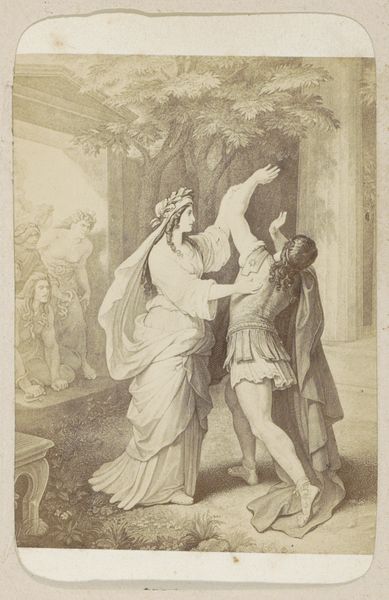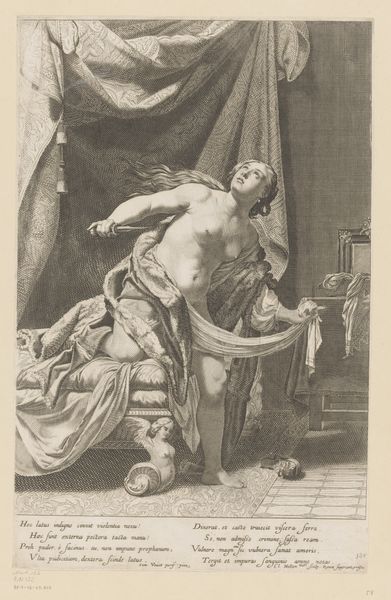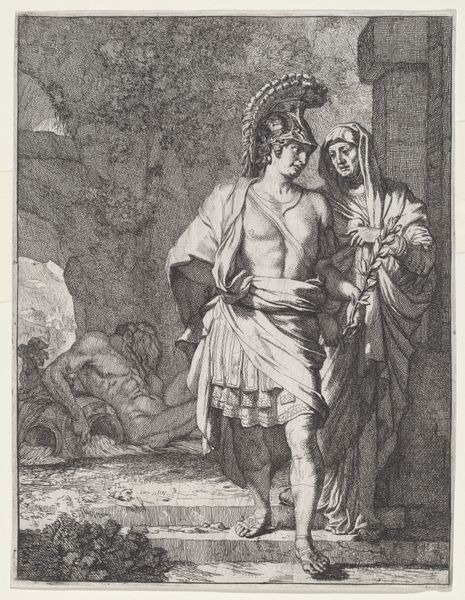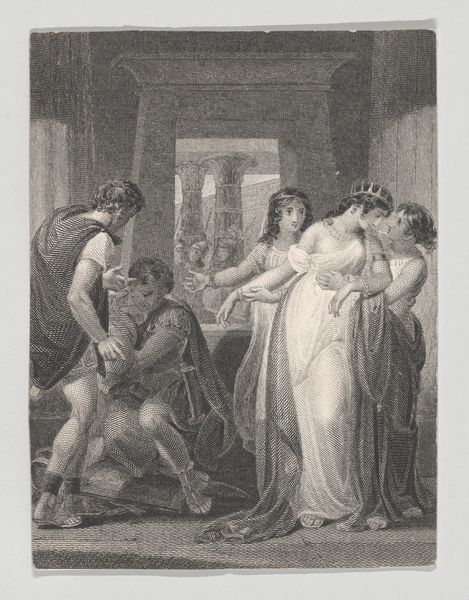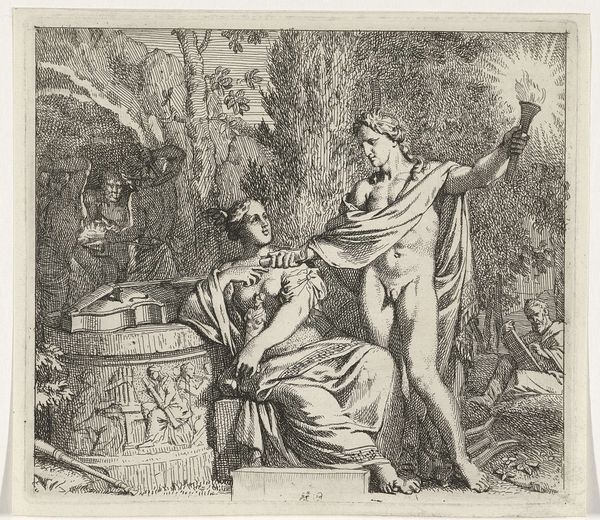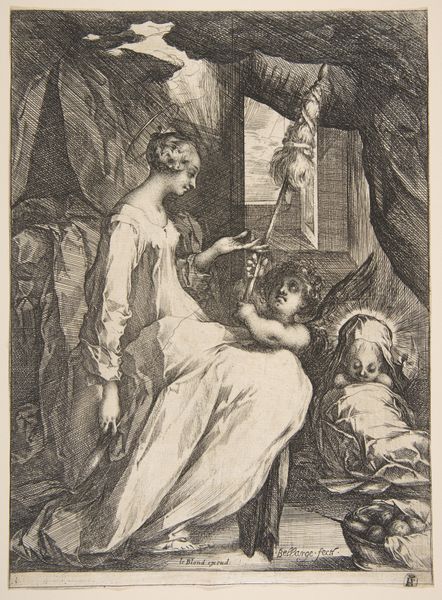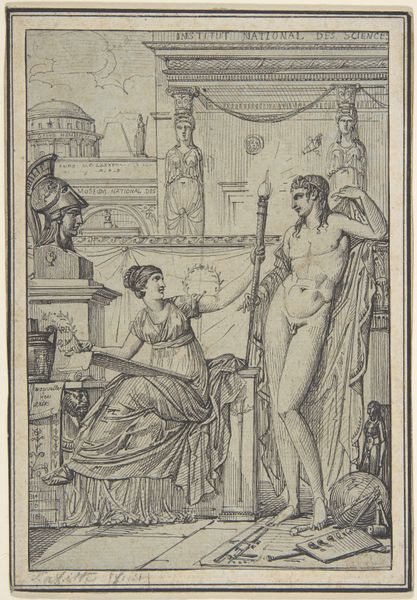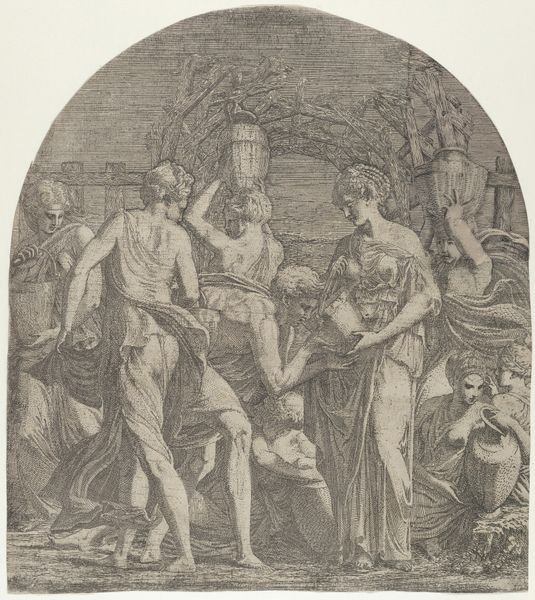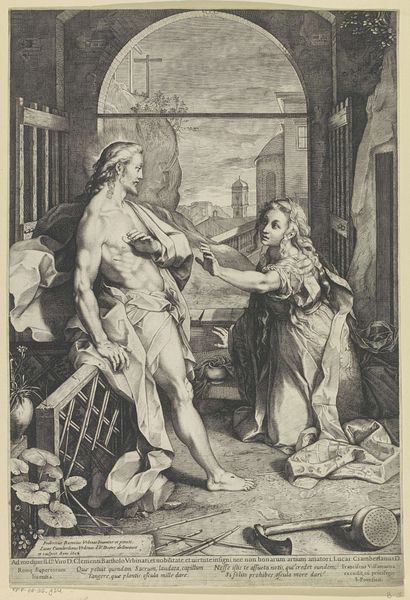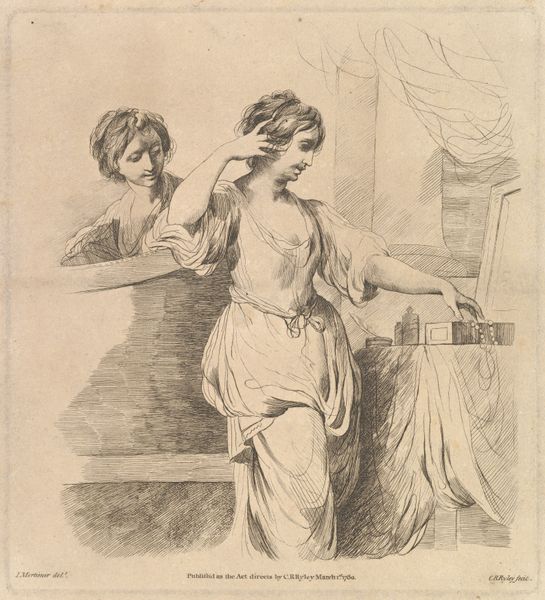
Dimensions: Sheet: 8 3/4 x 6 in. (22.2 x 15.3 cm)
Copyright: Public Domain
Curator: So, here we have "Conversing with a Captive," an engraving from 1779. It's currently housed in the Metropolitan Museum of Art. There is a stark contrast with classical architectural elements juxtaposed against onlookers, hinting at colonial themes and cultural encounters, isn’t it? Editor: My first thought? It's got a touch of theatre to it, almost staged. The way the light catches the figures, like players on a darkened stage. The tension! You can almost feel the heavy weight of what isn't being said. Curator: Right, it plays with spectacle. The artist, Robert Blyth, clearly invites us to consider the theater of power and observation. Look at how the composition stages the male figure on a ruin, while the woman, our 'captive', stands tall yet bound by circumstances. Editor: There's a quiet defiance in the way she holds her helmet, almost mocking the expectation of submission. What stories do you think she could tell? Is this commentary on wartime captivity, perhaps something more broadly resonant with subjugation? Curator: Exactly! And, thinking historically, prints like these often circulated in the late 18th century to fuel discussions around empire and morality. It invites its original audience – and us now – to think about what 'civilization' really means when confronted with human suffering. But I'm interested, does the piece’s classical aesthetic influence our modern response to it, do you think? Editor: For sure, the aesthetic lends a layer of idealization but with irony. It evokes a sense of timelessness – almost saying this push and pull between captor and captive, dominator and dominated, is etched into human experience itself. The rendering, though delicate, somehow makes the subject matter heavier. It’s a beautifully rendered unease. Curator: A poignant reflection. I think this piece serves as a potent reminder that art acts as a critical lens, forever interrogating our past and, by extension, our present values. Editor: Absolutely. It invites introspection, that uncomfortable but necessary conversation with ourselves, echoing through time from the whispers of those onlookers to our own quiet observations today.
Comments
No comments
Be the first to comment and join the conversation on the ultimate creative platform.

